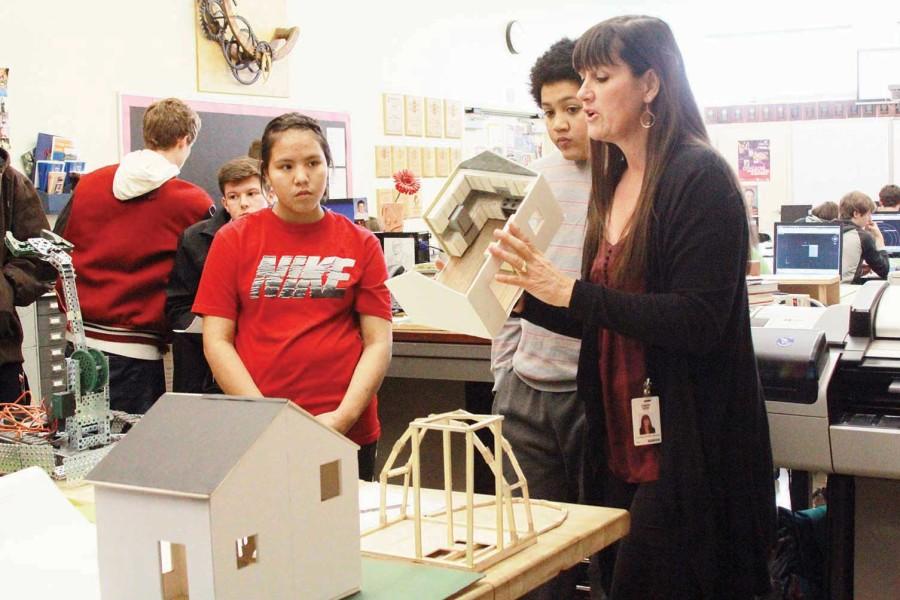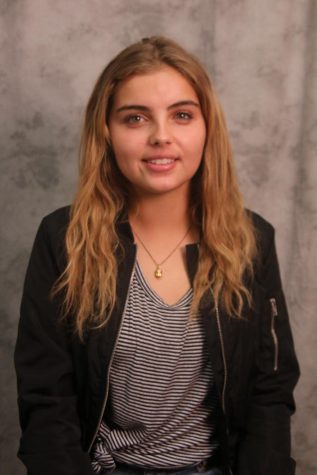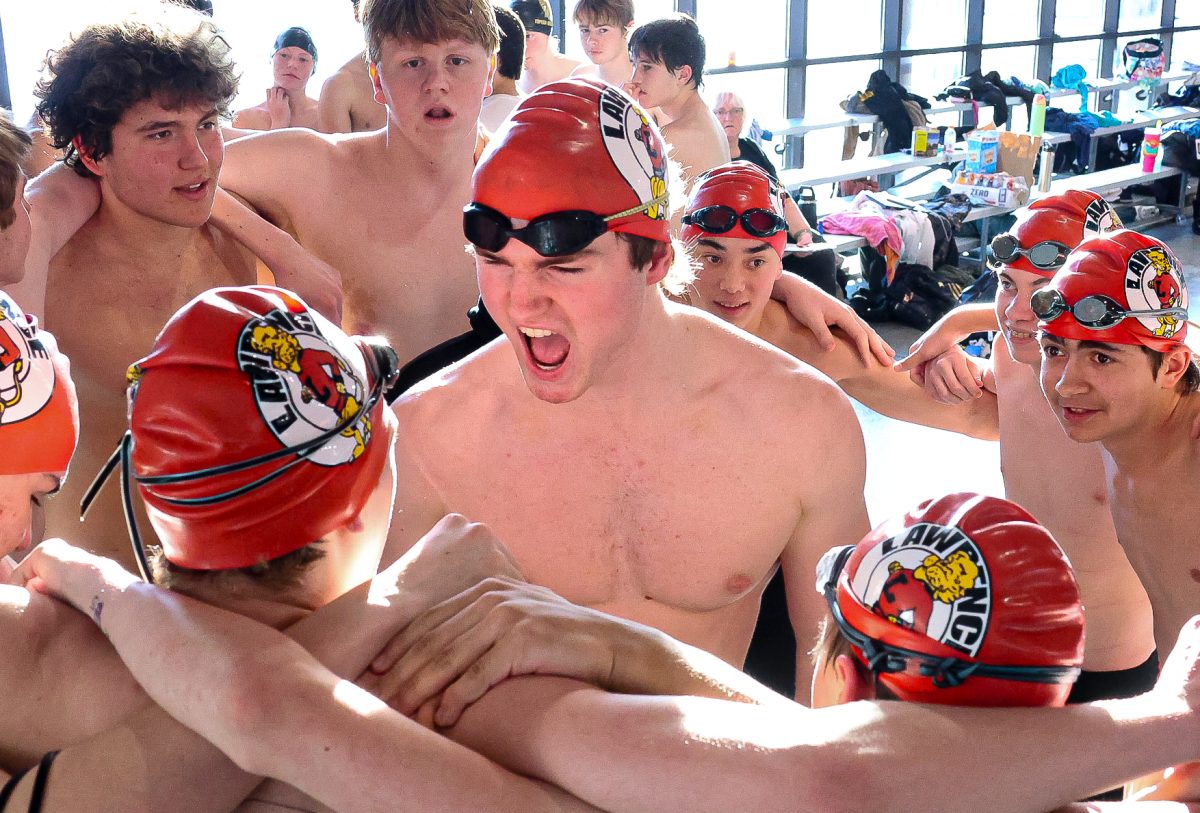New faces in the crowd
Incoming freshman class size exceeds usual numbers
Explaining a class project, engineering teacher Charlie Lauts introduced her CTE classes to groups of incoming freshmen on Feb. 5.
March 4, 2015
Each freshman class is a little bit different. Lately, it’s been the size of the classes that sets them apart.
Last semester’s incoming class was bigger than the last, which was bigger than the class before that.
However the class of 2019 is projected to have 425 to 475 students, making it the biggest incoming class in recent years.
This year’s freshman class is 380 students, bigger than most have been. However only 325 students are graduating in the class of 2015, leaving 100-150 more students in the building for next year.
Contrary to student-held beliefs, concerns aren’t about space but rather adequate staffing.
The board of education sets student-to-teacher ratio limits, the current being 21 students per certified staff member. This includes not only teachers but guidance counselors and other staff as well.
Keeping the current ratio will result in having to hire new staff. However, if the ratio was changed to 22 or 23 students per staff member, less hiring would be necessary.
Some teachers think more staffing is necessary, as class sizes are on the rise.
“It is not fair to the students to be placed in crowded classrooms where it will be more difficult to get individual feedback and instruction,” English teacher Paula Bastemeyer said. “Especially if students are new to the building and curriculum expectations, they need more interaction with their teachers, not less.”
Supplies and materials can also restrict class sizes. The rising number of students in the building has caused somewhat of a resource strain.
“My classes have been pretty big this year,” Advanced Biology teacher Lisa Ball said. “I really wouldn’t want to see them get too much larger because I’m running out of lab materials.”
Large incoming classes aren’t a new issue to the district. Student population ranges from 1,450-1,600 students per high school each year.
The incoming class is estimated to bring the total student body to about 1,600 students, but the number will not be finalized until enrollment is finished.
“It happens in cycles,” assistant principal Mike Norris said. “Sometimes you get bubbles of big classes and sometimes you get bubbles of smaller-than-usual classes.”















